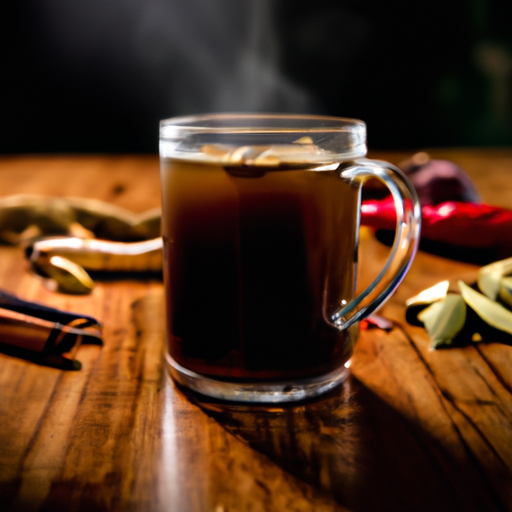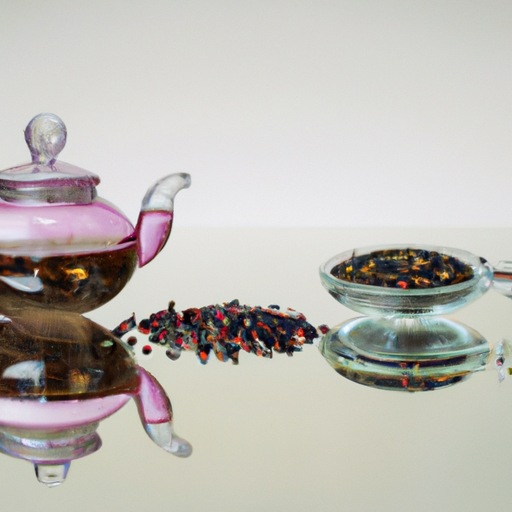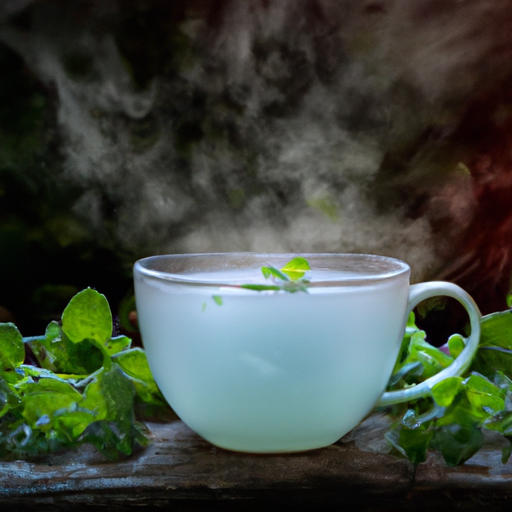Tea Customs Around the World: A Cultural Exploration
Do you ever wonder about the different tea customs around the world?
Step into a cultural exploration as we dive into the fascinating traditions of tea ceremonies in Japan.
Next, let’s explore the elegance of high tea in England.
Then, we’ll delve into the art of tea in China, known for its intricate tea preparation and presentation.
Moving on, let’s explore the vibrant culture of chai in India, where spiced tea holds a special place in daily life.
We’ll also discover the symbol of hospitality in Moroccan mint tea, a refreshing drink often served to guests.
Take a moment to learn about the meeting places for friends in Turkish tea houses, where tea is enjoyed in a social setting.
Finally, we’ll appreciate the art of tea brewing with Russian samovars, traditional tea urns that are still used today.
Key Takeaways
- The tea ceremonies of Japan, England, and China (Chanoyu, High Tea, and Cha Dao) are highly ritualized and reflect the cultural values and traditions of each country.
- Symbolism plays a significant role in the tea ceremonies, with tea leaves, teaware, and gestures carrying deep meanings and representing aspects of nature, emotions, and mindfulness.
- Tea customs vary across different cultures, such as the traditional Chinese Gongfu tea brewing, Indian spiced Chai tea, Moroccan mint tea as a symbol of welcome, and Turkish tea houses as social hubs.
- Each tea ceremony or custom offers a unique and transformative experience, allowing people to connect with loved ones, showcase etiquette, and appreciate the rituals and symbolism associated with tea.
The Tea Ceremony in Japan
In Japan, you’ll experience the serene and intricate tea ceremony, a traditional practice that embodies harmony and mindfulness. The tea ceremony, known as chanoyu, is a highly ritualized event that has been practiced for centuries. It isn’t just about drinking tea, but also about appreciating the art of tea making and the beauty of the tea utensils. Tea masters in Japan dedicate their lives to mastering the tea ceremony rituals, which require meticulous attention to detail and a deep understanding of the principles of harmony, respect, purity, and tranquility.
During the tea ceremony, guests are invited into a specially designed tea room, often adorned with traditional Japanese elements like tatami mats and sliding doors. The ceremony begins with the preparation of the tea, which involves carefully measuring and whisking powdered green tea called matcha. The tea is then served to guests in small bowls, accompanied by traditional Japanese sweets.
The tea ceremony isn’t only a cultural practice but also a form of meditation. It encourages mindfulness and a sense of tranquility, as participants focus on every movement and gesture. The ritualistic nature of the tea ceremony creates a serene and peaceful atmosphere, allowing participants to escape the hustle and bustle of everyday life.
Transition: While the tea ceremony in Japan focuses on harmony and mindfulness, high tea in England is a tradition of elegance and indulgence.
High Tea in England: A Tradition of Elegance
You’ll love the elegance and tradition of High Tea in England. High Tea, also known as Afternoon Tea, is a quintessentially British custom that has been cherished for centuries. It’s a delightful experience that allows you to indulge in delectable treats, exquisite teas, and immerse yourself in a world of refined etiquette.
High Tea etiquette is an important aspect of this tradition. When partaking in High Tea, it’s customary to dress smartly and arrive on time. The table is typically set with elegant china, silverware, and linen, creating a sophisticated atmosphere. As you sit down, remember to keep your posture upright and use proper table manners. It’s considered impolite to slurp your tea or make excessive noise while eating.
Afternoon Tea traditions vary, but the general format includes a selection of finger sandwiches, scones with clotted cream and jam, and a variety of pastries and cakes. The tea is brewed to perfection and served alongside milk and sugar. It’s customary to start with the sandwiches, followed by the scones, and end with the sweet treats.
High Tea in England isn’t just about the food and drink; it’s a social occasion that allows you to spend quality time with loved ones. So, sit back, relax, and let the elegance and tradition of High Tea transport you to a bygone era of sophistication and refinement.
Cha Dao: The Art of Tea in China
In China, Cha Dao, or the Art of Tea, holds great significance and is deeply rooted in the country’s culture. It’s a practice that encompasses tea ceremonies, the symbolism behind tea, and the meticulous preparation of Gongfu tea.
The art of Cha Dao invites you to explore the intricate rituals and traditions surrounding tea in China, providing a unique insight into the country’s rich history and appreciation for this ancient beverage.
Tea Ceremonies in China
If you want to experience the elegance and tradition of tea ceremonies, China is the perfect destination. Tea ceremonies in China have a long and rich history, dating back thousands of years. The etiquette of a tea ceremony is of utmost importance, as it reflects the respect and reverence for tea.
Before the ceremony begins, guests are expected to wash their hands and rinse their mouths to cleanse themselves. The host carefully selects the tea leaves and prepares the tea with precision and grace. The tea is then served to the guests, who hold the cup with both hands as a sign of respect. Each sip is savored slowly, appreciating the aroma and flavor of the tea.
As the tea ceremony concludes, the guests express their gratitude to the host. With its deep-rooted history and intricate etiquette, tea ceremonies in China are a true embodiment of tradition and culture.
Now, let’s delve into the symbolism in cha dao.
Symbolism in Cha Dao
As you participate in a Cha Dao tea ceremony, you’ll notice the deep symbolism woven into every aspect of the experience. The cultural significance of tea rituals is evident in the way the leaves are prepared and served. Here are three sub-lists that highlight the symbolism in Cha Dao:
-
Tea Leaves:
-
The shape and color of the leaves can represent different aspects of nature or emotions.
-
The way the leaves unfurl in hot water symbolizes the unfolding of life’s mysteries.
-
The patterns and formations that the leaves create in the cup can reveal hidden messages or insights.
-
Teaware:
-
The design and materials of the teapot and cups can reflect traditional values or beliefs.
-
The way the teaware is handled and presented can convey respect and gratitude.
-
Each piece of teaware may have its own symbolic meaning, representing harmony, balance, or enlightenment.
-
Gestures and Movements:
-
The precise and intentional movements of the tea master symbolize mindfulness and focus.
-
The way the tea is poured and served represents the flow of energy and connection.
-
The gestures of gratitude and appreciation towards the tea and the participants demonstrate respect and unity.
The symbolism in Cha Dao adds depth and meaning to the tea ceremony, creating a profound and transformative experience.
Gongfu Tea Preparation
To fully appreciate Gongfu tea preparation, you should focus on the precise and deliberate movements involved in infusing the leaves multiple times. Gongfu tea brewing is a traditional Chinese tea ritual that requires skill, patience, and attention to detail.
The process begins with heating the teapot, tea cups, and brewing utensils. The tea leaves are then carefully measured and placed into the teapot. Water, heated to the ideal temperature, is poured over the leaves, allowing them to steep for a short period of time.
The infused tea is then poured into small cups, savored, and enjoyed. This method of brewing allows for multiple infusions, with each steeping revealing different flavors and aromas. Gongfu tea rituals not only produce a delicious cup of tea but also create a sense of mindfulness and appreciation for the art of tea making.
The Vibrant Culture of Chai in India
You’ll be captivated by the vibrant culture of chai in India. Chai, a traditional Indian spiced tea, isn’t just a beverage, but a way of life. Its rich history and deep-rooted traditions make the experience of drinking chai in India truly enchanting.
Here are three fascinating aspects of chai culture in India:
-
Chai Etiquette:
-
Chai is often served in small clay cups called ‘kulhads,’ adding to the traditional charm of the experience.
-
It’s customary to hold the chai cup with both hands as a sign of respect and appreciation.
-
In social gatherings, serving chai is seen as a gesture of hospitality and warmth.
-
Chai Recipes:
-
Chai comes in various flavors and recipes, each with its own unique blend of spices.
-
Masala chai is the most popular, made with a mix of cardamom, cinnamon, ginger, cloves, and black tea.
-
Other popular variations include adrak chai (ginger tea) and elaichi chai (cardamom tea).
-
Chai Wallahs:
-
Chai Wallahs, or tea vendors, are a common sight on the streets of India.
-
These skilled artisans brew and serve chai with a flair, often pouring the tea from a height to create a frothy texture.
-
Chai Wallahs play a significant role in the chai culture, adding their own touch of artistry to the experience.
Immerse yourself in the vibrant culture of chai in India and indulge in the delightful flavors and rituals that make it a cherished part of Indian life.
Moroccan Mint Tea: A Symbol of Hospitality
Immerse yourself in the refreshing flavors and warm hospitality of Moroccan mint tea, a symbol of welcome and friendship in Moroccan culture. Moroccan tea customs are deeply rooted in symbolism and the importance of hospitality. The act of serving tea is seen as a gesture of friendship and generosity, and it is an integral part of Moroccan hospitality.
In Moroccan culture, tea is not simply a beverage, but a way to connect with others and build relationships. The preparation of Moroccan mint tea is a ritualistic process that involves pouring the tea from a height to create a frothy foam. This not only enhances the taste but also adds a touch of elegance to the experience.
The significance of hospitality in Moroccan culture is reflected in the way tea is served. The host takes great pride in serving the tea, often using beautiful teapots and intricately designed glasses. The tea is served in three stages, symbolizing the three key virtues of Moroccan culture: hospitality, love, and purity.
Symbolism in Moroccan tea customs goes beyond the act of serving the tea. The tea itself is a blend of green tea leaves, fresh mint leaves, and sugar. Each ingredient represents a different aspect of Moroccan culture. The green tea leaves symbolize vitality and energy, while the fresh mint leaves represent hospitality and friendship. The sugar adds a touch of sweetness to the tea, symbolizing the generosity and kindness of the Moroccan people.
The table below provides a visual representation of the symbolism in Moroccan tea customs:
| Ingredient | Symbolism |
|---|---|
| Green Tea Leaves | Vitality and Energy |
| Fresh Mint Leaves | Hospitality and Friendship |
| Sugar | Generosity and Kindness |
As you sip on a cup of Moroccan mint tea, you not only indulge in the refreshing flavors but also become a part of a centuries-old tradition that celebrates the values of hospitality and friendship. So, sit back, relax, and let the warmth of Moroccan hospitality embrace you as you savor each sip of this delightful beverage.
The Tea Houses of Turkey: A Meeting Place for Friends
As you step into the vibrant tea houses of Turkey, you’ll be enveloped in an atmosphere of lively conversations and warm camaraderie. Tea culture is deeply ingrained in Turkish society, and these tea houses, known as ‘çay bahçesi,’ serve as a meeting place for friends, a hub of social interaction.
Here are a few reasons why the tea houses of Turkey are a must-visit:
-
Turkish hospitality: The moment you enter a tea house, you’ll be greeted with a smile and a steaming cup of tea, served in delicate tulip-shaped glasses. This embodies the renowned Turkish hospitality, where strangers are welcomed as friends.
-
Rich tea tradition: Tea holds a special place in Turkish culture, and it’s customary to drink multiple cups throughout the day. The brewing process is meticulous, with loose leaf tea brewed in a double teapot called a ‘çaydanlık.’
-
Vibrant atmosphere: The tea houses are bustling with life, filled with laughter, lively conversations, and the clinking of glasses. It’s a place where people gather to relax, unwind, and enjoy the company of friends.
As you delve into the world of tea customs, it’s fascinating to explore the unique ways different cultures embrace this beverage.
Now, let’s journey to Russia and discover the art of tea brewing with Russian samovars.
Russian Samovars and the Art of Tea Brewing
If you visit Russia, you’ll be captivated by the intricate designs and craftsmanship of traditional Russian samovars used to brew tea. Russian tea traditions are deeply rooted in their culture and history, and the traditional tea vessels play a significant role in these customs.
Samovars are elegant metal containers that are used to heat and serve tea. They’re typically made of brass, copper, or silver, and are adorned with intricate engravings and decorative patterns. The craftsmanship of these samovars is truly remarkable, showcasing the skill and artistry of Russian artisans.
In Russian tea traditions, the samovar holds a central place. It isn’t only a vessel for brewing tea but also a symbol of hospitality. The process of brewing tea in a samovar is a meticulous one. The water is heated in the base of the samovar, while the tea leaves are steeped in a separate teapot placed on top. The resulting tea is then poured into small cups, often accompanied by sugar, lemon, or jam.
The act of serving tea from a samovar is considered a gesture of warmth and friendship. It’s common to gather around the samovar, sipping tea and engaging in conversations. This ritual creates a sense of community and closeness, making tea a social activity in Russian culture.
Frequently Asked Questions
What Are the Health Benefits of Drinking Tea?
Drinking tea has numerous health benefits.
Tea customs and their cultural significance vary around the world.
Tea is known to be rich in antioxidants, which help protect the body against damage caused by free radicals.
It also contains compounds that can improve brain function and reduce the risk of heart disease.
Additionally, tea has been associated with weight loss and a lower risk of certain cancers.
These health benefits make tea a popular beverage enjoyed by many.
How Long Does It Take to Prepare a Traditional Japanese Tea Ceremony?
When it comes to the traditional Japanese tea ceremony, the duration can vary depending on various factors. The tea ceremony process involves numerous intricate steps, such as the preparation of the tea, the serving of the tea, and the precise movements and gestures performed by the host. These actions are all carried out with utmost precision and attention to detail.
The overall duration of a traditional Japanese tea ceremony can range from 30 minutes to a few hours, depending on the level of formality and complexity involved.
What Types of Tea Are Commonly Served During High Tea in England?
During high tea in England, various types of tea are commonly served. The most popular ones include English breakfast tea, Earl Grey, and Darjeeling. Each tea has its own unique flavor and aroma that complement the assortment of pastries and sandwiches served during high tea.
The etiquette and customs of high tea differ in various regions, but in England, it’s customary to pour milk into the tea and to hold the teacup by the handle.
What Are the Different Types of Tea Ceremonies in China and How Do They Differ From Each Other?
In China, there are various types of tea ceremonies, each with its own unique customs and traditions. The Chinese tea ceremony is an integral part of their culture and is deeply rooted in history.
These ceremonies differ from one another in terms of the tea used, the preparation methods, and the rituals followed. Exploring the differences in Chinese tea ceremonies provides a fascinating glimpse into the rich and diverse tea culture of China.
Can You Share Some Traditional Recipes for Making Chai Tea at Home?
Sure, you’re looking for traditional chai tea recipes, right?
Well, let’s start with authentic Indian chai. To make it at home, you’ll need black tea, whole spices like cinnamon, cardamom, and cloves, as well as milk and sweetener.
Another popular option is the homemade chai latte, which combines chai tea with frothy milk.
If you’re feeling adventurous, you can try the masala chai recipe, which adds ginger and black pepper for an extra kick.
Enjoy experimenting with these flavorful chai variations!
Conclusion
As you conclude this cultural exploration of tea customs around the world, you can’t help but be mesmerized by the rich tapestry of traditions and rituals associated with tea.
From the graceful Tea Ceremony in Japan to the elegant High Tea in England, each culture has its unique way of celebrating this beloved beverage.
Like a warm embrace on a chilly day, tea connects people across borders and time, reminding us of the beauty and diversity that exists in our world.














